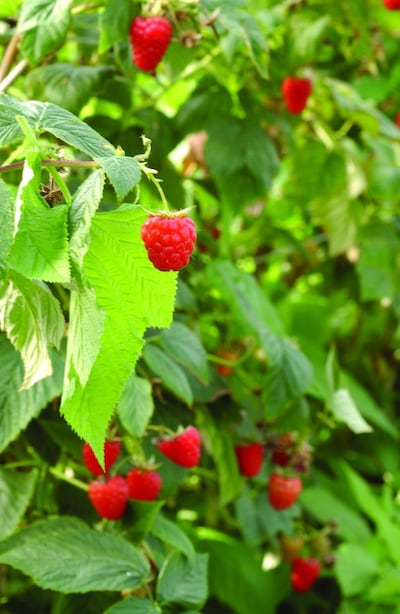August is many ways a time of reckoning in the garden, an impossible-to-avoid visual record of seeds sown or not sown, of plants that are flourishing and others that are lost or languishing. For the very same reason, it’s also a great time of year to take careful note of what’s failed, what’s succeeded, and the many reasons why. But just don’t rely on memory alone. Instead if you set aside an hour or two this month to jot it all down in a garden notebook, you’ll be forever grateful that you did.
Are there, for example, any plants that catch your eye for all the wrong reasons, perhaps because of the colour of their flowers, or their untidy growth habit, or the fact they seem to inevitably succumb to disease at this time of year? Or others that have got too big for their boots, or – the very opposite – are being slowly smothered by their larger, more vigorous neighbours?
Likewise, are there annoying holes in the planting that are only now apparent? Or parts that are overstuffed? Ugly views that you’d love to conceal, or pretty ones that you’d like to highlight? Perhaps a pathway that you’ve noticed is just too narrow when the garden is in full bloom, a vegetable bed that’s just a smidgen too large to give easy access, or a concern about crop rotation that’s nagging away at you? Write it down.
[ More Gardening columnsOpens in new window ]
Maybe you’ve recently discovered that a sunny but exposed area of your garden or allotment might benefit from some shelter in the form of hedging. Or that a once-sunny area has become over-shaded over the years, a gradual result of overly mature trees and shrubs in need of some selective pruning (middle-aged spread is every bit as much a thing in our gardens as it is among us humans). Or perhaps this summer’s endless rain has highlighted the fact that a very damp area of the garden is in bad need of some sort of drainage, or alternatively that it could make the perfect bog garden. Write it down.
READ MORE
Similarly, there might be some particularly successful plant combinations that you’d like to repeat throughout a border or to create yourself after recently spotting them in another garden, or others that you would like to see the back of. Old favourites that you would like to propagate to keep them safe, or new varieties that you would like to make sure to grow again next year. Write it all down, so that in the shorter, darker days of late autumn, winter and early spring you can use that written record to inspire and inform as well, of course, as a reminder.
Sometimes it’s something altogether bigger that needs changing, in which case a more radical solution is required. It might be, for example that you’ve just grown very tired of the existing planting and design of your garden, and now yearn for something new. And why not? There are few things more joyless than tending a garden that bores you to death.

Or maybe your lifestyle has changed over the years so that you now have much more space and time to grow the kinds of plants you love. A no-longer-used children’s play area, for example, that could be transformed into a kitchen garden, or a cut-flower patch, or a garden pond. Or a neatly trimmed lawn that it’s occurred to you would make the most beautiful, nature-friendly wildflower meadow while simultaneously cutting down on maintenance. If so, then this is the time to make careful record of it all, along with some photos on your phone for reference.
Other sections of my garden notebook are far more aspirational. Will I ever plant a mini-orchard of medlar trees?
My own garden notebook list is a large one, long enough to keep me busy for the foreseeable future. For ease of reference, I’ve broken it down into key sections, first and foremost of which is propagation. This is how I remind myself (or try to remind myself) to home-save the ripe seed of many favourite plants before they fall, and to take cuttings or make divisions of others at the right time of year. It’s where I record my seed, bulb and tuber orders each year and make careful note of those that flourished and those that struggled, and of flowering and harvesting times. It’s also where I try to keep a record of cuttings, divisions and seed given as gifts by gardening friends, a history of their provenance that’s as fascinating as it is heart-warming.
Another section is dedicated to plant purchases, and a third to plant losses, a chastening catalogue of varieties that died for a wide variety of reasons, from the fierce cold of last winter or a dislike of the growing conditions they were given to (oh, the shame of it) pure neglect. All are food for thought and a great way to learn from mistakes.
Other sections of my garden notebook are far more aspirational. Will I ever plant a mini-orchard of medlar trees? Hopefully yes, but right now it’s not at the very top of my very long list. Is a pleached hornbeam hedge next to our old farmhouse a step too far in terms of maintenance? Hmmm, I’m going to mull that over a little longer before I decide. But in the meantime, those thoughts are all there on record in my garden notebook as interesting ideas for my future self to weigh up and consider rather than forget.
Dates for your diary
Sunday, August 27th, 9.30am-5pm: The final Dublin-based ISNA Plant Fair of the year takes place at Airfield House and Gardens, Dundrum, Dublin 14, with stalls from more than 20 ISNA specialist nurseries. airfield.ie
Tuesday, September 5th: The Irish Dahlia Society National Show, at Ballyknockan Farm, Wexford Y21-A526. Potential exhibitors should email their entries to Pat Thornton at tpatthornton@gmail.com or Trevor Stevenson at trevorandruth@gmail.com on, or before, Saturday, September 2nd.
This week in the garden

Summer-fruiting raspberries that have finished cropping need to be pruned immediately to encourage plenty of new, healthy fruit earing canes next year. To do this, use a sharp secateurs to cut all the old, faded fruited stems back down to ground level, then select six to eight of the strongest new canes (these will be bright green and healthy looking) and tie them gently to horizontal support wires tautened between wooden posts. Any remaining young stems from each plant should be cut back down to ground level.
Tomato plants need plenty of care and regular feeding with a potash-rich liquid feed at this time of year to help keep them healthy and productive. Continue to regularly nip out any new side-shoots that appear as well as any yellow leaves from around the base of the plant. Careful watering is also really important. Water too often or too inconsistently and you can cause problems with disease, as well as with fruit ripening inconsistently. For expert advice on all things tomato-ish, see the gardening blog of the Dublin organic gardener and tomatophile Nicky Kyle at nickykylegardening.com















